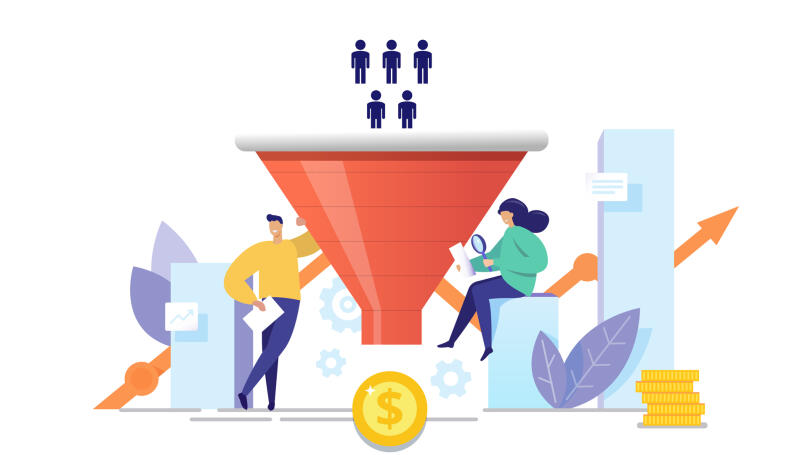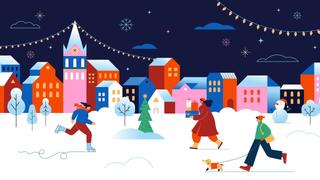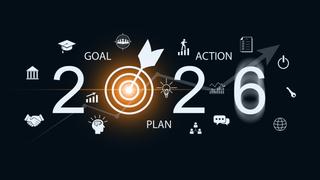Sales Funnel
What is a sales funnel?

The sales funnel is a marketing model that describes a potential customer's path from getting to know a product and an offer to closing a deal. The funnel is a customer's path within a company, in layman's terms. The American advertising and sales pioneer Elias Lewis first proposed the concept of a sales funnel in 1989. With the help of a funnel, one can assess the effectiveness of all company stages. That includes employees and the marketing component. For example, it will reveal at what stage you "filter" customers and how to increase conversion rates and the number of purchases. You can also use the funnel in real estate, manufacturing, marketplaces, and even contextual advertising.
Why use a sales funnel?
By visualising and concretising the customer journey, the sales funnel in marketing eliminates problems at different stages and "expands" those bottlenecks that create obstacles to the customer's passage to the next sales stage. That is why the sales funnel is an integral part of any marketing strategy. You can also use it to:
- introduce and evaluate KPIs for sales managers;
- improve communication with customers and their loyalty to build long-term relationships;
- improve those processes that hinder the customer journey and increase satisfaction with the customer experience;
- automate the entire process of finding and engaging a customer through to closing a deal (after all, you only need to build the sales funnel once for it to function for years).
Stages of the sales funnel
The sales funnel stages are the steps a client has to make to close a deal with the company. Schematically, the funnel looks like a cone, where the top part is the widest, as the first stage which absolutely all potential clients reach. However, the further the client advances, the narrower the funnel gets. Finally, the funnel is the narrowest at the end, as this stage is where you seal the deal. Consequently, a minimum number of clients remain at this stage.
The sales funnel consists of the following steps:
- Informing a potential customer about the availability of a product or offer, which results in the customer becoming aware of the company and getting to know it;
- Establishing contact with the customer, causing them to become interested in a particular product;
- Taking a targeted action (e.g., going to the site) that convinces the customer and, consequently, prompts them to make a decision;
- Carrying out the deal and paying for the product or service.
You need to strictly follow all the sales funnel stages in the correct sequence for it to work!
How to create a sales funnel
Creating a sales funnel can be done in four steps:
Step 1: Define the stages
You need to count all the stages that the customer passes from the moment they enter the funnel to the moment they pay for the product. To do this, imagine yourself as the customer and go from start to finish. Depending on the type of business you have, its size and the marketing channels involved, the number of funnel stages can vary from four to six, eight or even ten. Over time, the funnel can also evolve and grow together with your business processes. Later on, by comparing early and new versions of the funnels, you can even find out how a company's current policies and actions have changed.
If creating a sales funnel yourself is new to you, it is better to limit yourself to the key stages, regularly adding new data as you go through the next steps.
Step 2: Choose your tools
You can create the sales funnel on paper or using a whiteboard. Alternatively, you can use a special service such as CRM or Excel. Bear in mind that the more stages you have in your funnel, the harder it is to collect the right data, as you need statistics for each of those stages individually. For example, how many leads the marketing channel brings in, how many of them click on the link, how many read the post, etc.
Step 3: Form funnel components (USP, interest generation, lead magnet)
At each stage of the sales funnel, you need to provide the customer with something that will make them move on to the next stage. Make sure you have these components in place at all stages of your funnel. The first thing that is important to the customer and brings them into the funnel is a unique selling proposition or USP for short. Then, for the customer to go further, you must pique their interest. And for them to take your intended targeted action, you should use a lead magnet, i.e., a reward.
Step 4: Build and analyse the funnel based on the data collected
Analyse the statistical data to determine how many per cent of customers are leaving during the funnel process. To identify its bottlenecks, note where exactly these numbers are volatile and after which action they begin to decrease. Take time to test the funnel in practice and ensure it accurately reflects reality. Make changes if you notice the need to do so in practice.
Ideally, there should be several sales funnels for each marketing channel, product or employee, etc. This way, you will be able to clearly see each sale funnel conversion.
The classic sales funnel and the marketing sales funnel

The classic four-stage sales funnel described above is based on the AIDA consumer behaviour chart developed by William Townsend in 1924. In layman's terms, AIDA, like the funnel, includes the same stages:
- Awareness - the customer becomes aware of the existence of the product and offer;
- Interest - the customer becomes interested in the product (key stage);
- Desire - the customer develops a desire to do something with the product or brand;
- Action - the customer commits an action, i.e., purchases the desired product.
The reverse sales funnel
The reverse sales funnel is designed to continue the classic sales funnel. It ensures that the customer's journey does not end with closing the deal. The reverse funnel has three stages and looks like a reversed cone, i.e., widening towards the bottom. Thus, joining together, the reverse and classic funnels schematically form an hourglass. By joining the reverse funnel, you can increase product sales, audience loyalty and brand awareness.
The additional three stages of the reverse funnel usually include the following:
- The after-sale service. After the transaction, interaction with the customer continues with managers providing product information, assisting in using the product, and enabling access to customer support.
- Loyalty building. This stage uses gamification, free content and loyalty programmes to engage the customer after sealing the deal in the life and development of the brand. This stage helps the customer form a positive opinion about the company.
- Incentives. The customer should leave a review and recommend the product. At this stage, the customer begins to share information about the company with their environment, making the funnel wide again, increasing the number of potential customers and brand awareness.
Cascade sales funnels
A cascaded sales funnel mirrors a classic sales funnel, but with one difference. Using the cascaded sales funnel, the customer completes the deal from the first or second stage of the funnel rather than at its end. As a result, it is often used to attract cold traffic and turn it into the hot one.
In practice, the cascade funnel looks like this:
- when a customer visits the website, they see a banner with a 20% discount message and an offer to make a purchase;
- when receiving a lead magnet for a targeted action, the customer gets a personal discount again;
- after registering in the personal account, the customer gets regular offers via text or email.
A cascaded sales funnels is used in online stores. It increases the number of deals and boosts profit by 15-20%.
Automated sales funnel
Any sales funnel can be automated and thus minimise human involvement in its operation. You can do this by finding a special online service or platform which collects data on all stages of the funnel, signals problems, turns leads into real customers and even offers businesses optimised solutions to increase sales.
An automated sales funnel or, as it is often called, an auto funnel, usually includes the following tools:
- CRM for data management;
- chatbots for website placement;
- diagram or site map (the point is to make the customer journey more convenient);
- targeted advertising;
- email newsletter;
- series of online webinars.
Use these tools to plan revenue from the sales funnel. You can set them up as you need and estimate their location on the website in a way that organises and increases sales. However, it may require mathematical calculation. To help with that, you can find an appropriate book, training, or courses available.
Sales funnel for the sales manager
These sales funnels are also important for the manager because you can use them for the professional development of employees and the adjustment of their work. For example, you can use them to find out:
- In what type of conversations with customers managers are more effective: telephone, online or face-to-face;
- A manager's most frequent mistake when interacting with a client (not listening attentively, rushing, etc.);
- At what times of the day and with what types of customers managers work best;
- Whether managers are meeting set KPIs and, if not, where and in what areas they are falling behind;
- What skills managers lack;
- To what extent the human factor, namely the sales manager, influences conversion rates and the permeability of the sales funnel.
Sales funnel on Instagram

You can also build a sales funnel on Instagram if you're expanding your blog or online business. Again, you can do this in a few steps.
Step 1: Analyse your competitors
If your competitor is also promoting on Instagram, gather information about them and their promotion. Study their target audience, content, brand style and tone of the message. Try to identify the weaknesses and strengths of their products and customer interactions, and try to draw up the sales funnel they use. Document the steps that you notice. For example, the competitor uses advertising from bloggers - write down that stage. You can later introduce it to your funnel.
Step 2: Prepare your account to attract traffic
Your e-commerce sales funnel on Instagram won't work if your profile is not visually appealing, as this social network is all about visuals. The better your "packaging," the less money and fewer steps you need for the funnel. Make sure to pay attention to the following elements of your profile:
- The header has a USP or states why people should subscribe to you.
- The profile visuals look balanced (choose two to three colours for the overall palette) and match the tastes of your target audience.
- Highlights show all information about you and your brand and cover popular customer objections - for example, the reason for a particular product's price.
- Anyone can see that your profile is active (stories are up, feed is updated regularly).
- There are profile tags, feedback, and comments underneath photos.
- You use hashtags and only post quality photos.
Step 3: Design and set up your sales funnel
You design this funnel in the same way as the classic one, that is, you should create the customer's journey from first finding your profile to the moment of purchase. For each stage, you need to prepare your content:
- Introduction posts for the first stage;
- Engaging and interactive stories for the second stage (to get attention);
- Informative posts and relevant stories that will generate interest for the third stage;
- Posts and stories with feedback, tags and user-generated content to drive purchase decisions;
- Calls in posts and stories to write you a DM to make a purchase and pay for the product. This content does not come separately, but joins the content from stage three onwards.
That forms the basis of the content sales funnels on Instagram.
Sales funnel in targeted advertising
A key feature of targeted advertising as an advertising channel is that it is demonstrated predominantly to colder traffic on social media and warmer traffic on search engines. Users who have already encountered your targeted ads before will be more likely to respond to them and convert into customers more quickly. You should create your sales funnel based on these features. In contrast to the classic funnel, the funnel in targeted advertising most often uses three stages:
- Demonstration of a USP to users and demand generation;
- Sale;
- Additional sales through advertising for related products - an additional and optional stage of the funnel.
You should launch a separate targeted ad for each audience segment based on its needs and interests. Thus, each segment should have its own sales funnel.
The B2B sales funnel
The sales funnel in the B2B segment is not the same as the online sales funnel. Instead, it often has a more branched and complex structure due to the specifics of each segment. So, when building a B2B sales funnel, you must consider the following:
- Decision-making in this segment takes longer and may depend on several people at once - e.g., management board members.
- Work in the B2B segment typically involves forming long-term relationships between companies, so one stage of the funnel may be aimed specifically at building loyalty (for example, using the reverse funnel described above).
- The customer may not fully understand the functionality and benefits of the product, which does not make it difficult to naturally weed out non-targeted leads at the first stage of the funnel.
- In the B2B segment, a product or service is typically complex, so it is essential to start communicating the product's benefits and objectives in the early stages.
- Content and components like lead magnets that move the customer to the bottom of the funnel should also be relevant and appropriate for the B2B sector.
Sales funnel templates
There are a variety of different types of sales funnels. The choice and structure of the funnel depend on the specifics of the business and product, so there is no unique template or scheme for building a sales funnel. All the sales funnel stages and necessary actions can be adjusted, reduced, or added. However, you can use two standard templates as a basis.
The classic sales funnel template looks like this:
- The number of visitors to the website;
- The number of visitors who stayed on the website and want to purchase the product;
- The number of visitors willing to take advantage of the offer - e.g., they have placed a request for a call-back;
- The number of visitors engaging in a dialogue with the company to discuss terms or price;
- The number of actual buyers.
A B2B sales funnel template may look like this:
- The total number of potential customers;
- The number of customers the manager was able to contact;
- The number of interested customers;
- The number of customers the manager was able to negotiate with;
- The number of customers who were able to close the deal.
Sales funnel services and software
The following services and tools are useful for building and automating your sales funnel:
1. Sendpulse. An inexpensive automated sales funnel builder with free bot connection from WhatsApp and flexible mobile app. However, it lacks integration with major CRMs.
2. LPTtracker. Another automation platform integrates easily with CRMs and has IP telephony, allowing for a call-back and Call Tracking connectivity. Additionally, it offers visitor capture and voice robot features.
3. Power BI. The software offers cloud-based solutions for data collection, sales funnel analysis, and visualisation. It allows collecting data from many sources and provides it in easy-to-understand charts. However, it is expensive, so this software is primarily suitable for large and established companies.
4. Bitrix24. One of the best CRM systems allows you to create a huge number of groups and easily build internal communication, keep records, set and track tasks, store and analyse data.
5. Excel. The classic spreadsheet is available for all devices on Microsoft operating system. It is the most budget-friendly way to build and track your sales funnel that can also be integrated with many modern services.
Sales funnel examples
Nothing has changed in today's sales funnel. The funnel of the popular film streaming service Netflix is the clearest example of building a sales funnel easily and efficiently. The Netflix funnel looks as follows in practice:
Offer = home page of the website. When a user goes to the website from any channel (and Netflix uses almost all types of advertising, including targeting), they see an open landing page with one main button. Surely, it is an offer to sign up. Then, as a trigger to take the lead to the next stage of the funnel, Netflix uses the FAQ segment at the bottom of the page explaining the benefits of the service. Moreover, it demonstrates its slogan along the lines of "Watch anywhere. Cancel anytime."
The decision to use the service = rates. The service presents several packages in the price list. When studying them, the customer forms a desire to buy the product, while the service closes the customer's objections to the functionality and cost. Then, the user chooses the package and proceeds to the next stage.
Affirmative performance and purchase = payment page. Netflix has combined the third and fourth stages of the classic funnel. After selecting a rate, the user fills out a standard registration form and proceeds directly to the payment window, where they enter their bank details and purchase a subscription.
If the user leaves at any of these stages, Netflix offers a free trial subscription to new users. That is how it increases conversion rates.























